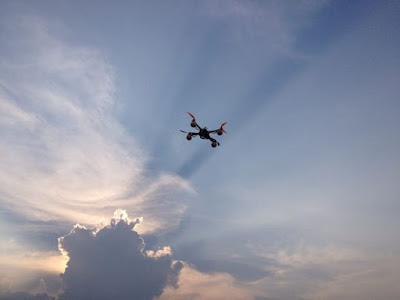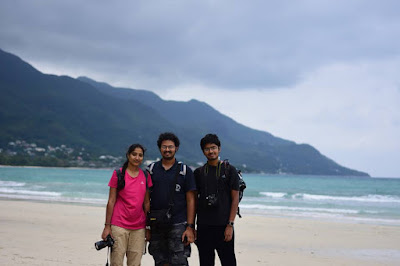 |
| Patiently waiting for the launch window. In the background, the second launch pad. |
Watching a rocket launch live was a dream since ages for me. I had an opportunity to intern at ASL, DRDO during my undergraduate days and learned quite a bit about launch vehicles. Upon hearing about the upcoming GSLV launch, I was enthusiastic about going and witnessing it. I'd probably not have been so keen to see a PSLV fly. It's after all the workhorse of ISRO and one of the most reliable launchers in the world, having launched both the Indian moon and Mars missions. GSLV on the other hand, is the nation's largest launch vehicle in service and has had a chequered past. India developed the GSLV using Russian cryogenic engines. These engines were suddenly denied to India as the international community felt that they could be used to build ICBMs. India used up all its remaining cryogenic engines, losing some to launch failures. ISRO has since developed a cryogenic engine in-house and called the vehicle the GSLV Mk.2. This particular launch was of a GSLV Mk.2 and was the first GSLV launch after a string of failures. The launch date was confirmed to be 8 Sept 2016 and the time was around 4PM. It was scheduled to fly from the second launch pad spaceport of Sriharikota. Sriharikota is located at the periphery of the Pulicat lake, which is currently India's largest lake.
 |
| Chennai Central. Early morning hours of 8 Sept. |
This was a one day trip. I had packed the best long range imaging stuff I had. The D7200 with a Tamron 70-300, Tamron SP 150-600 and the Celestron C90 Maksutov Cassegrain telescope with a Nikon adaptor. We caught a train to Chennai from KR Puram railway station. We again caught another train from Chennai Central to Sullurpet. After having a late breakfast at Sullurpet, we took a sharing jeep to Pulicat lake. The lake is mostly dry with the bed mostly exposed. In what was left of the lake, there were flamingos and other water birds. We spent the afternoon in a park on the road to the SHAR facility. The best view of the launch is not from the near the SHAR entrance but from the lake itself. That part of the lake was dried up, thankfully, and we could walk a kilometre into it. This placed us at about 3 Km from launchpad.
 |
| Preparing for the launch. |
 |
| The GSLV lifts off. |
 |
| Right before the booster separation. |

The launch was scheduled to happen at 4PM. It, however, got postponed by an hour due to unfavourable weather. By now, several people, enthusiasts and professionals alike, have gathered on the lake bed with equipment ranging from 400mm f2.8 lenses to simple binoculars. The clocked ticked closer and closer to 5PM. As we finished the countdown in our heads, the GSLV rose into the sky in one amazing sight. It was visible for a brief 40 seconds even from the 600 mm lens. I was able to glimpse the booster separation before it all became a single dot in the sky. The cloud it left behind stayed for hours and could be seen for hundreds of kilometres around. We got a lift from an ISRO personnel who was driving back. He dropped us at Sullurpet. We heard from him that the INSAT-3DR that the GSLV was carrying was successfully deployed in geosynchronous orbit and was transmitting signals back. It was a very fulfilling day for us and a moment of great celebration for the nation.
 |
| GSLV-F05 soars into the evening sky. |
We caught a SETC bus to Chennai which took ages to cross the 70-odd km and dropped us in Chennai by late evening. We had a quick dinner at an Adyar Ananda Bhavan and made it back to the railway station to catch a train back to Bangalore. It had been an event that I won't forget for years to come.
 |
| Getting into the trajectory. |









Comments
Post a Comment